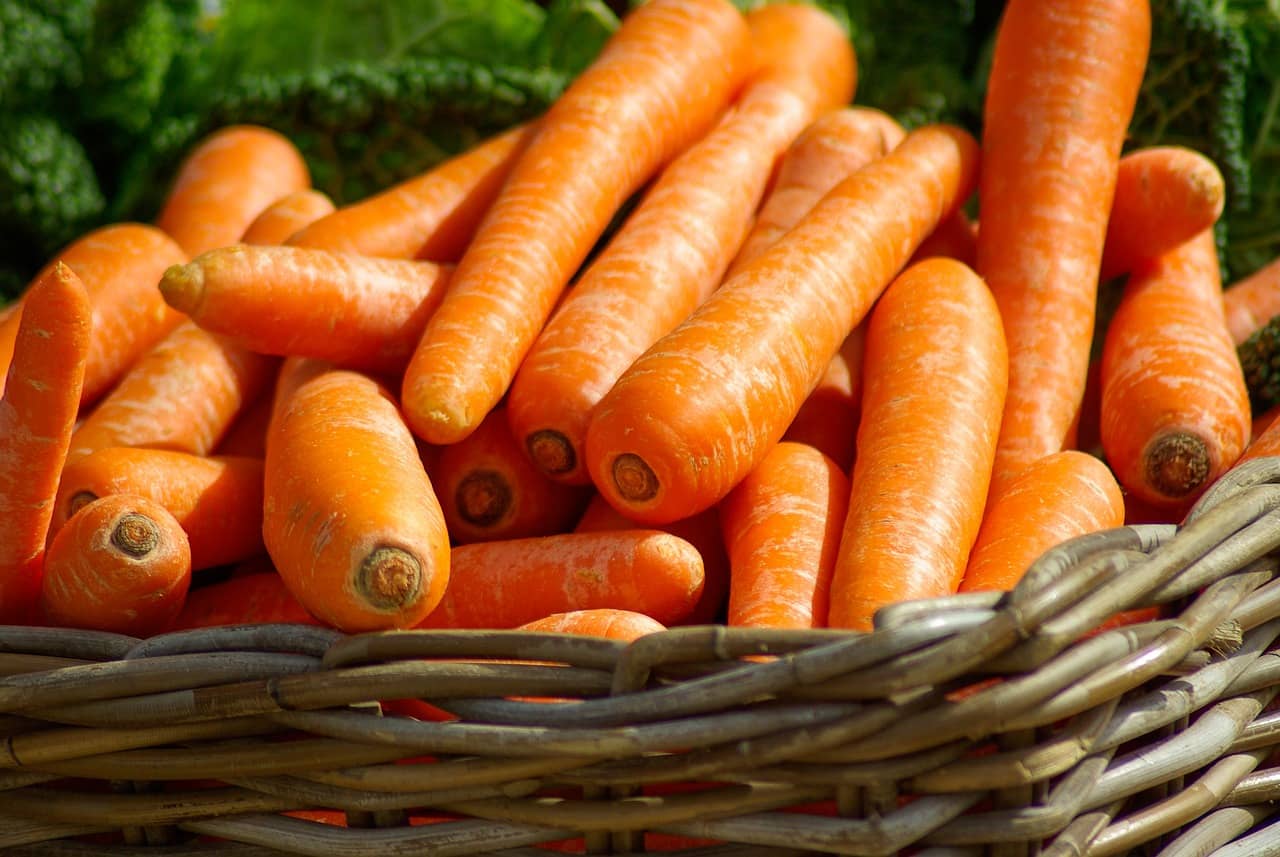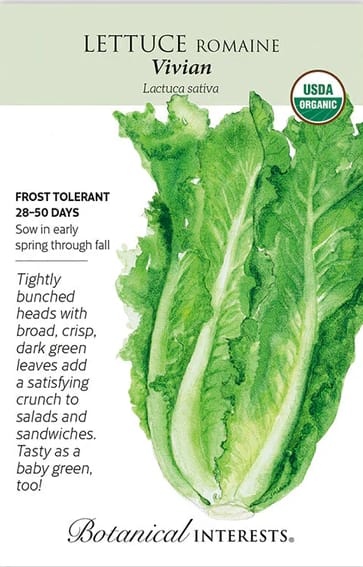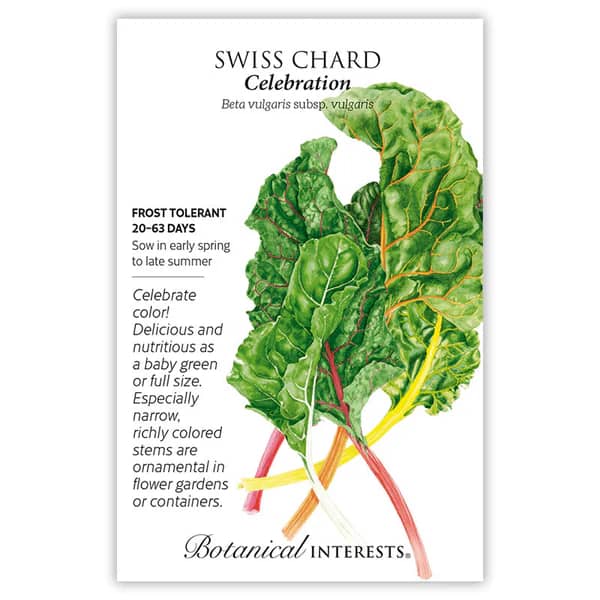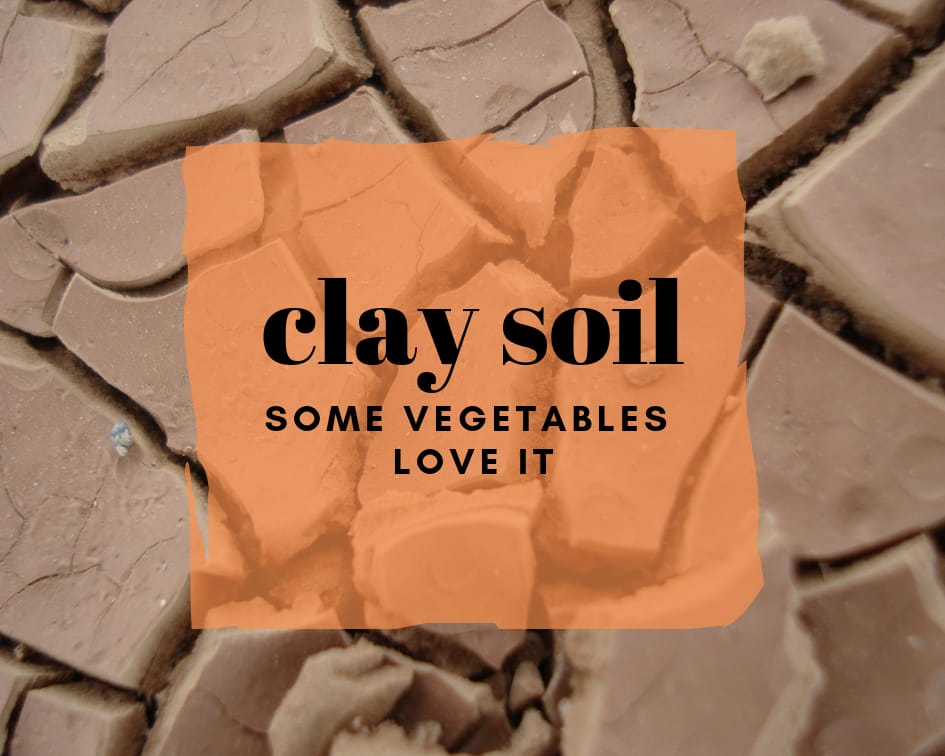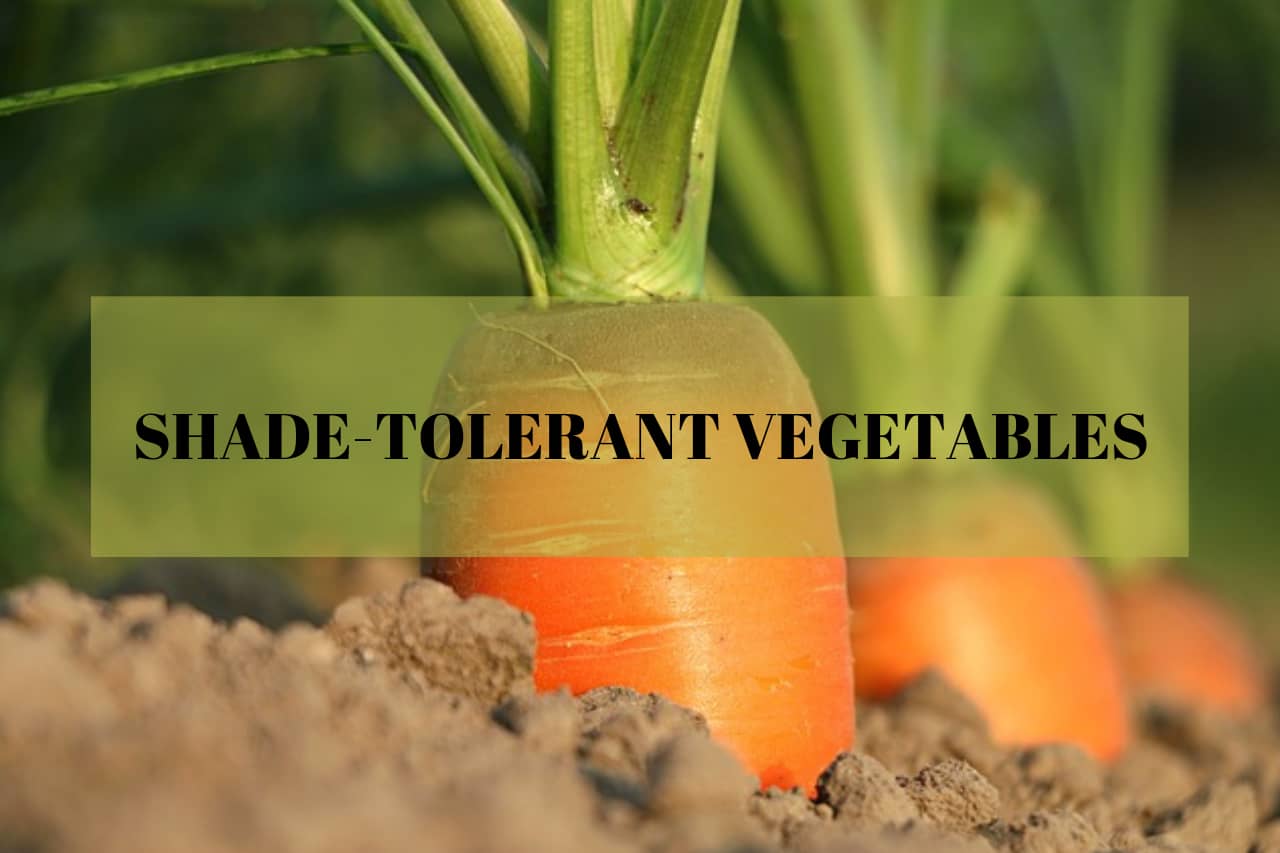This post may contain affiliate links. As an Amazon Associate we earn from qualifying purchases.
Come on in as we show you how to get that fall vegetable garden underway!
I don’t know about you, but summer can’t be over soon enough for me! The unbearable heat this year messed with my garden something awful. I need a success or two under my gardening belt to get my confidence back.
Thankfully, fall is the ideal time for growing many vegetables. There are those that thrive in cooler temperatures and shorter days.
Let’s take a look at some of these and learn how to grow them. Oh, before we start, make sure you know when the first frost date is for your region. You can find that information at Almanac.com.
Grow spinach in the fall vegetable garden
Spinach is an excellent choice for the fall garden due to its preference for cooler weather.
- Direct planting or transplanting: Spinach seeds should be direct planted into the garden as seedlings don’t tolerate transplanting.
- When to start seeds: Plant spinach seeds about 6-8 weeks before the first expected frost.
- Soil type: Spinach prefers well-drained, fertile soil with a pH between 6.5 and 7.0. Get yourself a pH meter at Amazon.com.
- Sunlight needs: Full sun to partial shade.
- Water requirements: Keep the soil consistently moist but not waterlogged.
- Fertilization: Apply a 3-1-2 fertilizer at planting (use half the strength recommended on the label for this first application) and then reapply at full recommended strength every 3-4 weeks.
- Pests: Watch out for aphids, leaf miners, and slugs. Aphids can be managed by squirting them off the spinach plants with water from the hose. Spinosad (Monterey Garden Insect Spray) will take care of leaf miners and grab some BONIDE® Bug & Slug Killer.
- Diseases: Spinach can be prone to downy mildew, which looks like a gray fuzz on the leaves, particularly those closest to the soil. Remove affected growth and use a bio fungicide to prevent new infections.
- Toxicity to pets: Spinach is generally safe for pets.
Carrots
Carrots are another popular choice for the fall vegetable garden, known for their sweet flavor when harvested in cooler weather.
- Direct planting or transplanting: Carrot seeds should be direct planted.
- When to start seeds: Sow carrot seeds 10-12 weeks before the first frost. Wait until the soil temperature is at least 61 degree Fahrenheit to plant the seeds.
- Soil type: Loose, sandy soil with good drainage is best.
- Sunlight needs: Full sun.
- Water requirements: Keep the soil evenly moist; avoid letting it dry out. “Place wet burlap or wet straw over the sown area in order to maintain high humidity and moisture around the seeds,” suggest the pros at SeminoleCounty.gov.
- Fertilization: Use a low-nitrogen fertilizer, diluted to half the strength recommended on the label, when the plants are about 3-4 inches tall. We suggest Burpee’s Organic Tomato and Vegetable fertilizer.
- Pests: Watch for carrot rust flies and root-knot nematodes. Monitor your carrot crop for a carrot rust fly infestation by placing yellow sticky traps along side the plants. Floating row covers will keep the adults away. If you see the brown larvae, spray the plants with Bacillus thuringiensis subsp. kurstaki (Btk). If it’s root–knot nematodes that are bugging your carrots, use a neem oil soil drench.
- Diseases: Carrots can be susceptible to leaf blight and root rot.
- Toxicity to pets: Carrots are safe for pets to eat.
Kale for the fall garden
Kale is a hardy green that thrives in cooler temperatures and can withstand light frosts.
- Direct planting or transplanting: Kale can be direct seeded or started indoors and transplanted.
- When to start seeds: Start seeds indoors 6-8 weeks before the first frost or direct seed 4-6 weeks before the frost.
- Soil type: Well-drained, fertile soil with a pH of 6.0 to 7.5.
- Sunlight needs: Full sun to partial shade.
- Water requirements: Keep soil consistently moist.
- Fertilization: Use a starter fertilizer at planting and every 4-6 weeks thereafter with a 3:1:2 ratio fertilizer. We love the 12-4-8 Big Green Leaves fertilizer from Bless your Soil.
- Pests: Watch for cabbage looper moth larvae, aphids, and flea beetles.
- Diseases: Kale can be prone to clubroot and downy mildew.
- Toxicity to pets: Kale can be harmful to pets in large quantities.
The fall vegetable garden is ideal for growing lettuce
Lettuce is a fast-growing crop perfect for fall gardens, offering a variety of types and flavors.
- Direct planting or transplanting: Lettuce can be direct seeded or started indoors and transplanted.
- When to start seeds: Start seeds indoors 4-6 weeks before the first frost or direct seed 6-8 weeks before the frost.
- Soil type: Loose, well-drained soil with a pH between 6.0 and 6.8. Need a soil pH meter?
- Sunlight needs: Full sun to partial shade.
- Water requirements: Keep the soil evenly moist.
- Fertilization: Apply a starter fertilizer at planting and then switch to a 3:1:2 ratio and apply every 2-3 weeks. In addition to the Big Green Leaves fertilizer, mentioned earlier, Mission Fertilizer makes a good liquid product.
- Pests: Watch out for aphids, slugs, and cutworms.
- Diseases: Lettuce can be prone to downy mildew and leaf spot.
- Toxicity to pets: Lettuce is safe for pets.
Radishes
Radishes grow quickly and can be harvested in as little as three weeks, making them ideal for fall planting.
- Direct planting or transplanting: Radishes should be direct seeded.
- When to start seeds: Sow radish seeds 4-6 weeks before the first frost.
- Soil type: Well-drained, loose soil with a pH of 6.0 to 7.0.
- Sunlight needs: Full sun.
- Water requirements: Keep soil consistently moist.
- Fertilization: Use a starter fertilizer at planting and again halfway through the growing period.
- Pests: Watch for flea beetles and root maggots.
- Diseases: Radishes can be susceptible to root rot and downy mildew.
- Toxicity to pets: Radishes are safe for pets.
Broccoli
Broccoli is a cool-weather crop that can be harvested well into the fall.
- Direct planting or transplanting: Broccoli is best started indoors and transplanted.
- When to start seeds: Start seeds indoors 8-10 weeks before the first frost and transplant 4-6 weeks before the frost.
- Soil type: Rich, well-drained soil with a pH between 6.0 and 7.0.
- Sunlight needs: Full sun.
- Water requirements: Keep soil consistently moist but not waterlogged.
- Fertilization: Fertilize at planting and then every 3-4 weeks with a balanced (for example, 10-10-10) fertilizer.
- Pests: Watch out for cabbage worms, aphids, and flea beetles.
- Diseases: Broccoli can be prone to clubroot and black rot.
- Toxicity to pets: Broccoli can be harmful to pets in large quantities.
Grow some beets!
Beets are versatile and can be harvested for both their roots and greens.
- Direct planting or transplanting: Beets should be direct seeded.
- When to start seeds: Sow beet seeds 8-10 weeks before the first frost.
- Soil type: Well-drained, loose soil with a pH of 6.0 to 7.5.
- Sunlight needs: Full sun to partial shade.
- Water requirements: Keep soil consistently moist.
- Fertilization: Incorporate organic material into the bed at planting. At six weeks after germination, side-dress the rows with 1/4 cup of 21-0-0 (ammonium sulfate) per 10 feet. (What’s side-dressing? Find out here). This will “… encourage rapid plant growth,” according to the experts at Utah State University.
- Cut way back on nitrogen on subsequent feedings. Switch to a lower nitrogen NPK, such as Lily Miller Bulb and Bloom and side-dress every 4 to 6 weeks. Use the amount suggested on the fertilizer label.
- Pests: Watch for leaf miners and aphids.
- Diseases: Beets can be susceptible to leaf spot and root rot.
- Toxicity to pets: Beet greens can be harmful to pets in large quantities.
Swiss chard
Swiss chard is a hardy green that can tolerate light frosts and is perfect for the fall vegetable garden.
- Direct planting or transplanting: Swiss chard can be direct seeded or started indoors and transplanted.
- When to start seeds: Start seeds indoors 6-8 weeks before the first frost or direct seed 4-6 weeks before the frost.
- Soil type: Well-drained, fertile soil with a pH of 6.0 to 7.0.
- Sunlight needs: Full sun to partial shade.
- Water requirements: Keep soil consistently moist.
- Fertilization: Apply a balanced fertilizer at planting and every 4-6 weeks.
- Pests: Watch for leaf miners and aphids.
- Diseases: Swiss chard can be prone to leaf spot and downy mildew.
- Toxicity to pets: Swiss chard is generally safe for pets.
Cabbage
Cabbage is a staple in many fall gardens, known for its ability to thrive in cooler weather.
- Direct planting or transplanting: Cabbage is best started indoors and transplanted.
- When to start seeds: Start seeds indoors 8-10 weeks before the first frost and transplant 4-6 weeks before the frost.
- Soil type: Rich, well-drained soil with a pH of 6.0 to 7.0.
- Sunlight needs: Full sun.
- Water requirements: Keep soil consistently moist but not waterlogged.
- Fertilization: Fertilize at planting and then every 3-4 weeks with a balanced fertilizer.
- Pests: Watch out for cabbage worms, aphids, and flea beetles.
- Diseases: Cabbage can be prone to clubroot and black rot.
- Toxicity to pets: Cabbage can be harmful to pets in large quantities.
- Learn How to Grow Cabbage in Winter and How to Grow Cabbage Quickly.
Peas plant these!
Peas are a cool-weather crop that can be planted in the fall for a delicious harvest.
- Direct planting or transplanting: Peas should be direct seeded.
- When to start seeds: Sow pea seeds 8-10 weeks before the first frost.
- Soil type: Well-drained, fertile soil with a pH of 6.0 to 7.5.
- Sunlight needs: Full sun to partial shade.
- Water requirements: Keep soil consistently moist.
- Fertilization: Apply a balanced fertilizer at planting and every 3-4 weeks.
- Pests: Watch for aphids and pea weevils.
- Diseases: Peas can be susceptible to powdery mildew and root rot.
- Toxicity to pets: Peas are generally safe for pets.
Here’s to a bountiful fall harvest!
